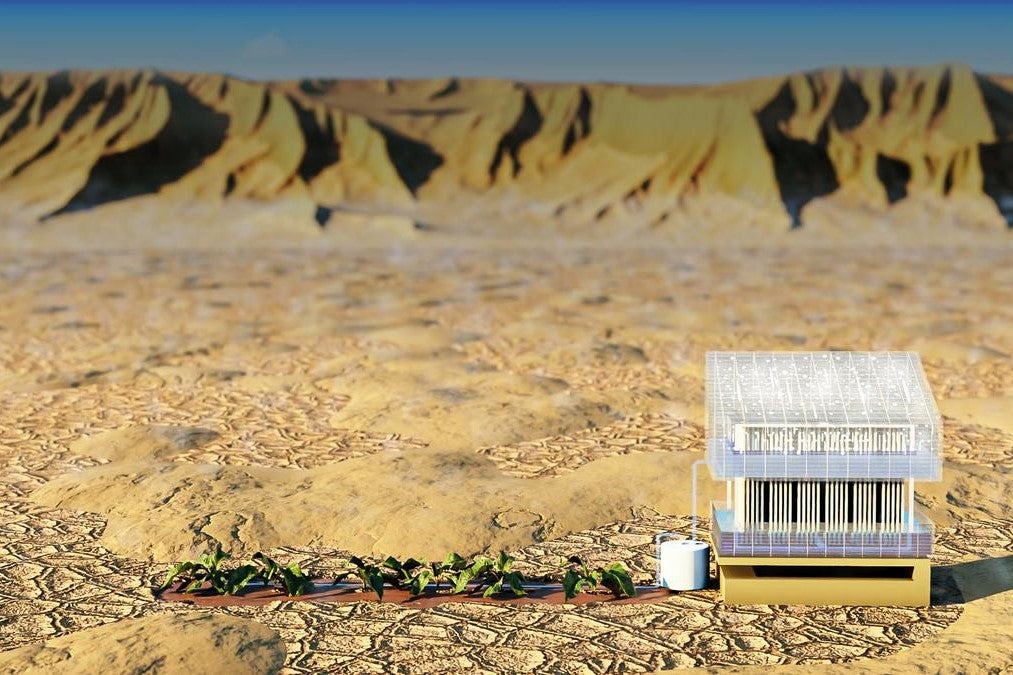The Independent's journalism is supported by our readers. When you purchase through links on our site, we may earn commission.
Solar-powered device harvests litres of drinking water from thin air
Breakthrough technology offers solution for arid regions and areas hit by water scarcity

Your support helps us to tell the story
From reproductive rights to climate change to Big Tech, The Independent is on the ground when the story is developing. Whether it's investigating the financials of Elon Musk's pro-Trump PAC or producing our latest documentary, 'The A Word', which shines a light on the American women fighting for reproductive rights, we know how important it is to parse out the facts from the messaging.
At such a critical moment in US history, we need reporters on the ground. Your donation allows us to keep sending journalists to speak to both sides of the story.
The Independent is trusted by Americans across the entire political spectrum. And unlike many other quality news outlets, we choose not to lock Americans out of our reporting and analysis with paywalls. We believe quality journalism should be available to everyone, paid for by those who can afford it.
Your support makes all the difference.Researchers have invented a solar-powered device capable of extracting several litres of water from thin air in a single day.
The new self-sustaining technology could provide a lifeline for people living in arid regions, according to the team that developed it from King Abdullah University of Science and Technology (KAUST) in Saudi Arabia.
The system works in a two-stage cycle that first captures water from the air with an absorbent material and then extracts it within a sealed chamber using heat from the sunlight.
Two-stage systems typically require manual labour to switch from one cycle to another, however the new technology automatically alternates between the two without need for intervention.
“Our initial inspiration came from observing natural processes: specifically how plants efficiently transport water from their roots to their leaves through specialised structures,” said Kaijie Yang, who led the study.
“In our system, mass transport bridges play a crucial role as a connection between the ‘open part’ for atmospheric water capture and the ‘closed part’ for freshwater generation.”
The system can generate two to three litres of water per square metre each day, which can be used to drink or for farming. The researchers demonstrated that it could be used to irrigate Chinese cabbage and desert trees.
The passive technique allows for continuous operation without intervention, while running the system for several weeks during tests required no maintenance.
Operational costs are also reduced by the materials used, which include a water-wicking fabric, a low-cost hygroscopic salt and a plastic-based frame
“We chose the materials for their affordability and availability, so we anticipate the cost is affordable for large-scale application in low-income areas,” said KAUST researcher Qiaoqiang Gan.
The device was detailed in a study, titled ‘A solar-driven atmospheric water extractor for off-grid freshwater generation and irrigation’, which was published in the journal Nature Communications.
The breakthrough comes amid a flood of emerging water harvesting technologies, which have been driven by water scarcity issues induced by climate change.

In June, scientists from Massachusetts Institute of Technology (MIT) unveiled a new device that can extract potable water from the air using water-absorbent ‘fins’.
Last month, Nasa unveiled a new spacesuit design that can recycle urine into drinking water in less than five minutes.
Join our commenting forum
Join thought-provoking conversations, follow other Independent readers and see their replies
Comments